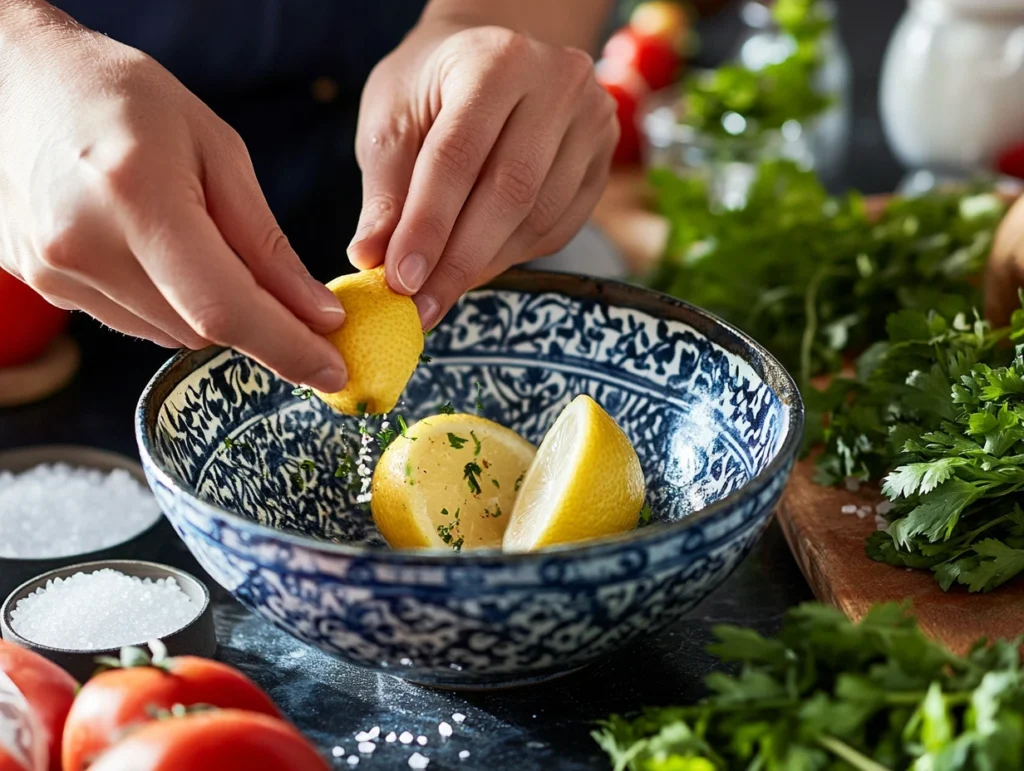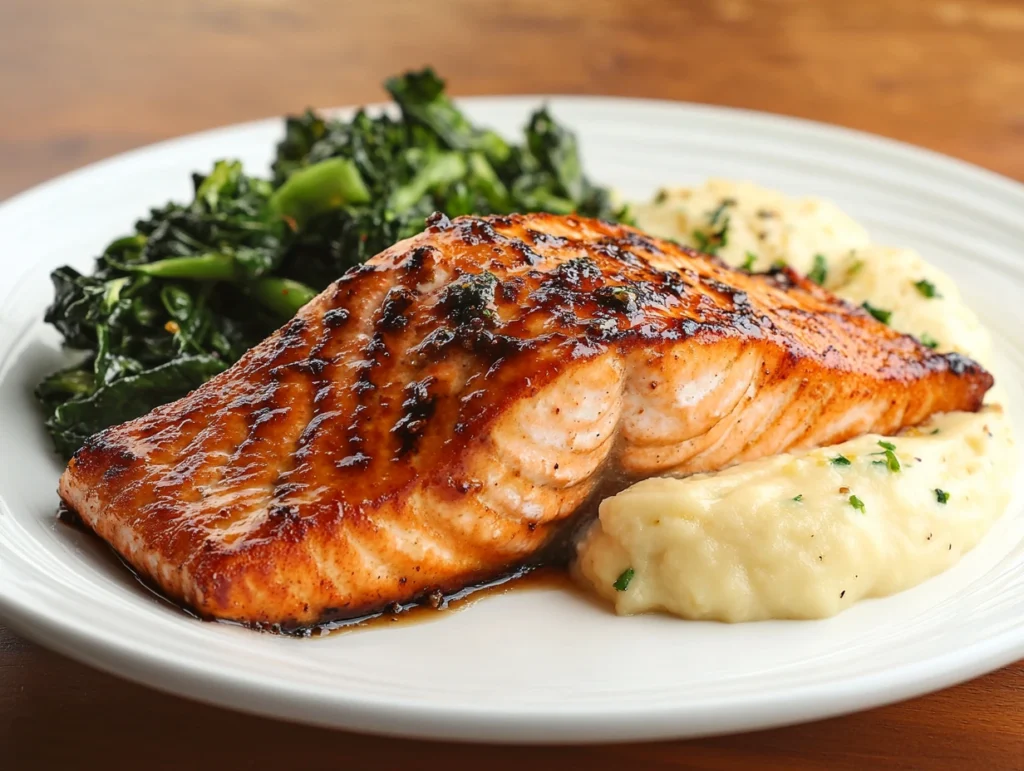Balancing flavors isn’t just a culinary skill; it’s an art. From combining sweetness and acidity to layering textures, achieving that harmonious flavor equilibrium transforms a meal from ordinary to extraordinary. This guide dives deep into the science of taste, cultural influences, and techniques that help you perfect your palate. Let’s begin by understanding the core of flavor balance.
Understanding Flavor Profiles
What Is Flavor Balance?
When we talk about achieving the perfect flavor balance, we’re referring to the harmony among five primary tastes: sweetness, saltiness, sourness, bitterness, and umami. Each plays a pivotal role in how we experience food. Without this balance, dishes can feel flat or overwhelming.
- Sweetness: Adds comfort and rounds out harsh flavors. Think honey, sugar, or even naturally sweet vegetables like carrots.
- Saltiness: Elevates natural flavors while enhancing other tastes. Common in salts, cured foods, and broths.
- Sourness: Brings brightness, cutting through richness with elements like vinegar or citrus.
- Bitterness: Adds complexity, often balancing against sweeter or richer flavors. Coffee and dark greens, for example, embody this taste.
- Umami: Known as the savory taste, it’s found in mushrooms, tomatoes, soy sauce, and aged cheeses. It amplifies depth.
The Importance of Flavor Balance
Flavor isn’t just about tasting good—it’s about creating an experience. When a dish achieves taste harmony, it satisfies on multiple levels, leaving you craving the next bite. Without it, even the freshest ingredients may fall short.
Enhancing the Culinary Experience
Balanced dishes excite the palate by introducing contrast and depth. For example, the tanginess of a citrus vinaigrette against the fatty richness of an avocado elevates the entire dish.
Cultural Perspectives on Flavor
Different cuisines approach balance uniquely. Southeast Asian dishes, for instance, thrive on sharp contrasts, combining sweet, sour, and spicy elements. Meanwhile, Mediterranean cooking leans on simplicity, letting natural ingredients shine through.
The Science Behind Taste
Understanding how flavor works can dramatically improve your cooking. Taste isn’t just about your tongue—it’s a full sensory experience.
How We Perceive Flavor
The tongue recognizes the five primary tastes using receptors, while the brain interprets combinations. Yet, smell plays an equally crucial role. Aromas provide context, making food either delightful or dull.
The Role of Smell
Did you know nearly 80% of your sense of taste comes from your sense of smell? This is why we lose some enjoyment when dealing with a stuffy nose. Cooking techniques like toasting spices enhance these aromatic cues, enriching the overall flavor.
Tools to Assess Flavor Balance
Tasting Techniques
A skilled chef knows that tasting as you go is vital. Take small bites and ask yourself: Does anything stand out too much? Are the flavors blending?
Palate Cleansers and Tools
Using palate cleansers like water, crackers, or even plain rice can help reset your taste buds while adjusting flavors.
The Golden Ratio of Flavors
While there’s no one-size-fits-all formula, many chefs rely on ratios to guide their recipes. For example, a vinaigrette might use a 3:1 oil-to-acid ratio, ensuring balance without overpowering the other ingredients.
By understanding these flavor profiles and the science behind taste, you can create meals that sing with balance and depth. Ready to explore how to achieve it in practice? Let’s move forward to the techniques.
Techniques to Achieve Perfect Flavor Balance
Balancing Sweetness and Acidity
Striking a harmony between sweetness and acidity can transform a dish. These two opposing forces often complement each other in delightful ways, creating complexity and depth in your recipes. Sweetness tempers sharp acidity, while acidity brightens overly sweet flavors.
Examples in Desserts and Sauces
Imagine a rich chocolate ganache—it’s undeniably sweet but risks becoming cloying without balance. Adding a dash of espresso or a drizzle of citrus sauce can cut through the sweetness, making each bite more exciting. Similarly, vinaigrettes often pair honey with vinegar to create a tantalizing dressing that satisfies every taste bud.
Adjusting Levels of Saltiness
Salt is the foundation of flavor harmony. It enhances the natural flavors of food but can also dominate if used excessively. Fortunately, there are ways to recover from over-salted dishes.
Over-Salted Dish Solutions
- Dilution: Add water, broth, or a neutral ingredient like unsalted rice to balance excess salt.
- Sweetness or Acidity: A pinch of sugar or splash of lemon juice can counteract saltiness.
- Texture Additions: Serving salty dishes with plain bread or steamed vegetables reduces the overall salt concentration when eaten together.
Managing Bitterness
Bitterness is often misunderstood, yet it adds essential complexity to many dishes. However, when it’s overwhelming, adjustments are needed to bring it into harmony.
Techniques to Reduce Excessive Bitter Flavors
- Add Sweetness: A small amount of sugar or honey can neutralize harsh bitterness, especially in coffee or dark greens.
- Incorporate Fat: Cream, butter, or oils can mellow bitterness, making the dish smoother and more enjoyable.
- Cooking Methods: Roasting vegetables like Brussels sprouts caramelizes their natural sugars, reducing bitterness significantly.
Enhancing Umami Taste
Umami, the savory element, brings depth and fullness to a dish. It’s the secret behind comfort foods that leave you craving more.
Using Fermented Ingredients and Savory Additions
Ingredients like soy sauce, miso paste, or nutritional yeast are packed with umami and can elevate soups, stews, or marinades. Adding sautéed mushrooms or slow-roasted tomatoes enhances this savory profile naturally.
Layering Flavors
Building a balanced flavor profile often involves layering ingredients strategically. Each addition contributes something unique, creating harmony in complexity.
Building Complex Dishes with Depth
For instance, a pasta sauce may start with sautéing onions and garlic for sweetness, followed by tomatoes for acidity, and finished with parmesan for umami. This gradual buildup ensures no single flavor overpowers the others.
The Role of Heat in Enhancing Taste
Heat isn’t just about temperature—it’s about spice. Properly managing heat can bring out the best in your dishes, but it requires a gentle hand.
Spices, Peppers, and Cooking Techniques
To add a spicy kick, include ingredients like chili flakes, but always balance them with sweetness or creaminess. If a dish becomes too hot, a dollop of yogurt or a splash of coconut milk can tame the burn.
Incorporating Texture as a Flavor Element
Texture might seem secondary, but it profoundly impacts how we perceive flavor. A dish with a variety of textures feels more engaging and complete.
Crunchy, Creamy, and Smooth Variations
A perfectly balanced salad, for example, might include crunchy nuts, soft cheese, and crisp greens. This interplay keeps your palate intrigued with each bite.
Tasting and Adjusting in Real-Time
As a chef or home cook, tasting and adjusting is a crucial habit. It’s not a one-and-done process but an iterative journey to achieve balance.
- Taste frequently as you cook, assessing how each addition shifts the overall profile.
- Use palate cleansers like sips of water or crackers to maintain accuracy.
Common Challenges and Advanced Tips

Overcoming Flavor Imbalances to Achieve the Perfect Flavor Balance
No matter how skilled you are in the kitchen, imbalances happen. Sometimes a dish feels too sweet or too salty. Knowing how to fix these issues can save the day and your meal.
Fixing Sweet, Salty, or Bitter Mistakes
- Too Sweet: Introduce acidic elements like lemon juice or vinegar to cut through the sweetness.
- Too Salty: As mentioned earlier, dilution works wonders. Adding unsalted starches like rice or potatoes can also absorb excess salt.
- Too Bitter: Balance bitterness with a touch of sugar or fats, like adding cream to an overly bitter coffee.
Preventing Overpowering Flavors in Balanced Recipes
When working with bold flavors like garlic, chili, or strong spices, less is often more. Build flavors gradually, tasting along the way to avoid overpowering a dish.
Advanced Pairing Techniques to Achieve Flavor Harmony
Pairing isn’t just about combining flavors; it’s about creating an experience where each element complements the other.
Food Pairings to Enhance Perfect Flavor Balance
While avoiding alcoholic examples, think of simple, complementary pairings like fresh mint tea with spicy dishes or citrus-infused water alongside rich, creamy meals. The goal is to either contrast or enhance the primary flavors of your dish.
Fusion Recipes to Create New Balance
Fusing cuisines is a modern culinary trend, but it requires a delicate hand. For instance, blending Asian umami flavors with Mediterranean olive oils can yield exciting results when balanced thoughtfully.
Seasonal and Local Ingredients for Perfect Flavor Balance
Using fresh, seasonal ingredients is one of the simplest ways to achieve flavor harmony. When produce is in season, it’s at its peak flavor, requiring less manipulation to shine.
How Freshness Affects Flavor
Tomatoes ripened in summer, for example, have a natural sweetness that doesn’t need excessive seasoning. Seasonal eating also aligns with sustainability and local farming support, enhancing not just your dishes but also your community.
Flavoring Without Additives
Natural flavoring is growing in popularity as cooks aim for health-conscious meals. Artificial additives often overshadow natural tastes, but there are excellent ways to bring out the best in food without them.
Natural and Organic Alternatives
- Use fresh herbs instead of flavor enhancers.
- Opt for citrus zest instead of bottled flavors.
- Add roasted vegetables for natural sweetness and depth.
Leveraging Emotional Memory to Achieve the Perfect Flavor Balance
Flavor isn’t just physical—it’s deeply emotional. Certain dishes evoke memories, making them taste even better than they might objectively be.
Comfort Foods and Personal Preferences
A simple bowl of chicken soup might feel perfect because it reminds you of home. Understanding this connection allows you to cook not just for taste but for creating emotional resonance.
Popular Flavor Balancing Frameworks
To guide your efforts in achieving perfect flavor balance, frameworks like the flavor matrix or flavor wheel are invaluable. They break down tastes into categories, showing how they relate and complement one another.
The Flavor Matrix and Wheel
These tools map out flavor pairings, offering suggestions based on science and tradition. For instance, they might highlight how earthy flavors like mushrooms pair with acidic ones like balsamic vinegar.
Understanding Flavor Trends
Culinary trends often dictate how we approach flavor. From plant-based umami innovations to global spice blends, staying aware of these trends can inspire new ways to balance tastes.
Innovative Approaches in Modern Gastronomy
Chefs are exploring techniques like fermentation, molecular gastronomy, and dehydrated ingredients to amplify and balance flavors in groundbreaking ways.
Seeking Feedback for Improvement
Cooking is both an art and a collaborative effort. Seeking feedback from family, friends, or diners is crucial in refining your skills.
Incorporating Feedback into Culinary Practice
When someone points out an imbalance, consider it an opportunity to learn. Adjust, tweak, and grow as a cook with every critique.
From mastering basic adjustments to exploring advanced methods, overcoming challenges and embracing innovation ensures your dishes always strike that elusive flavor harmony. Let’s now explore the practical role of presentation and its impact on perceived flavor!
The Role of Presentation in Flavor Perception
How Visual Presentation Helps Achieve the Perfect Flavor Balance
We eat with our eyes first—presentation sets the stage for how we perceive a dish’s taste. Studies have shown that attractive plating can make food seem fresher, more flavorful, and even more indulgent. Achieving the perfect flavor balance isn’t just about the palate; it’s about engaging all the senses.
Creating Visual Balance
Just as flavors need harmony, so does presentation. Balance bold and neutral colors, contrasting textures, and varying heights on the plate. For example, pairing a smooth puree with crispy garnishes adds intrigue and variety.
Elements of Plating That Contribute to Flavor Balance
The presentation is more than just aesthetic; it’s a deliberate technique to complement and enhance taste. Several factors go into crafting the perfect plate.
Color Choices and Contrasts
Bright colors like vibrant greens or deep reds naturally signal freshness and richness. Use these elements sparingly to draw attention without overwhelming the overall look.
Textures That Reflect Perfect Flavor Balance
Highlight contrasting textures, like pairing crunchy roasted nuts with creamy sauces. This not only engages the diner visually but also creates excitement in each bite.
Proportions That Enhance Perfect Flavor Harmony
Maintain proportions that reflect the balance of flavors. A dish with a large portion of one ingredient may look unappealing and suggest an imbalance in taste.
The Psychology Behind Plating
The way food is arranged can influence perception. Placing the most flavorful components prominently can guide the diner’s experience, ensuring the ideal first bite.
Guiding Flavor Expectations
If your dish features a rich sauce, place it in a way that allows the diner to mix it gradually with other components. This helps maintain balance throughout the meal.
Cultural Context in Presentation
Cultural traditions often dictate plating styles, reflecting how diners in specific regions enjoy balanced meals. For example, a Japanese bento box separates flavors into harmonious portions, while Mediterranean mezze encourages shared tasting experiences.
Modern Techniques to Elevate Presentation and Achieve Flavor Harmony
Innovative techniques like vertical plating (stacking ingredients) or minimalist styles can elevate both the look and flavor of your dishes.
Minimalist Garnishing for Flavor Focus
A sprinkle of fresh herbs or a drizzle of oil can add a final touch that ties the plate together. The key is restraint—over-garnishing can dilute the overall flavor impact.
Edible Art to Showcase Perfect Flavor Balance
Using edible flowers, unique cuts of vegetables, or colorful sauces lets you create edible art. These elements not only delight the eye but also hint at the intricate flavors within.
Using Props and Accessories
Even the plate or bowl itself contributes to the experience. Rustic wooden boards or sleek ceramic dishes add context and enhance the diner’s perception of the meal.
Setting the Scene
Accompanying elements, like linen napkins or soft lighting, further elevate the dining experience. Everything on the table contributes to the perception of flavor balance.
The role of presentation goes far beyond aesthetics. It enhances, complements, and even amplifies the flavor harmony you’ve worked so hard to achieve. Let’s now delve into addressing seasonal challenges and creating recipes that align with local ingredients.
Seasonal and Local Ingredients for Flavor Balance
The Importance of Seasonal Ingredients to Achieve the Perfect Flavor Balance
Cooking with seasonal ingredients is one of the best ways to achieve the perfect flavor balance. Seasonal produce has vibrant, natural flavors, making it easier to create balanced dishes without relying on heavy seasonings. When your ingredients are at their peak, harmony in flavor comes naturally.
Advantages of Seasonal Cooking
- Freshness: Seasonal fruits and vegetables are harvested at their peak, ensuring robust and natural flavors.
- Cost-Effectiveness: Locally sourced seasonal ingredients are typically more affordable than out-of-season imports.
- Nutritional Value: Seasonal foods retain more nutrients, contributing to healthier, balanced meals.
How Seasonal Flavors Help You Achieve the Perfect Flavor Balance
The beauty of cooking seasonally lies in how natural flavors complement one another. By focusing on what’s in season, you can achieve the perfect flavor balance with less effort. For instance, winter root vegetables have earthy richness that pairs beautifully with tangy pickles or bright citrus.
Examples of Seasonal Pairings to Achieve Perfect Flavor Harmony
- Spring: Combine tender greens with citrus for a vibrant salad that balances sweet and sour.
- Summer: Use ripe tomatoes and fresh basil for a naturally sweet and herbaceous profile.
- Fall: Pair roasted butternut squash with a hint of cinnamon and a touch of salty parmesan.
- Winter: Balance the richness of slow-cooked meats with the sharpness of pickled or fermented vegetables.
Sourcing Local Ingredients for Perfect Flavor Balance
Sourcing local ingredients is another fantastic way to achieve the perfect flavor balance. Local produce often reflects the natural flavors of your region, ensuring your dishes are both authentic and delicious.
Benefits of Local Ingredients for Flavor Harmony
- Cultural Connection: Local ingredients often reflect the culinary history of a region, lending authenticity to your cooking.
- Environmental Impact: Sourcing locally reduces the carbon footprint associated with long-distance food transportation.
Incorporating Local Ingredients to Achieve the Perfect Flavor Balance
Adding local ingredients into your cooking enhances authenticity and flavor. For example, use local honey to sweeten marinades or fresh herbs from nearby markets to complement savory dishes, ensuring you achieve perfect flavor harmony.

Challenges of Seasonal and Local Cooking While Maintaining Perfect Flavor Balance
Even with the benefits of seasonal cooking, there are challenges—limited availability being the biggest. To consistently achieve the perfect flavor balance, you need to be creative when certain ingredients aren’t in season.
Overcoming Availability Issues to Maintain Perfect Flavor Harmony
- Preservation: Freeze or pickle seasonal produce to extend its usability.
- Ingredient Swaps: Substitute similar ingredients when something is unavailable. For example, swap sweet potatoes for pumpkin in soups or stews.
Seasonal Inspiration to Achieve the Perfect Flavor Balance
Cooking seasonally inspires creativity and naturally helps you achieve the perfect flavor balance. Summer dishes, for instance, might lean into bright, fresh herbs to balance sweet fruits, while fall recipes focus on earthy tones paired with tangy dressings for depth.
By embracing seasonal and local ingredients, you ensure your meals are both fresh and perfectly balanced. With every dish, you’ll discover how easy it is to achieve the perfect flavor balance. Now, let’s explore advanced flavor layering techniques to elevate your cooking even further!


18 thoughts on “Achieve the Perfect Flavor Balance: Tips and Tricks for Every Cook”
Comments are closed.